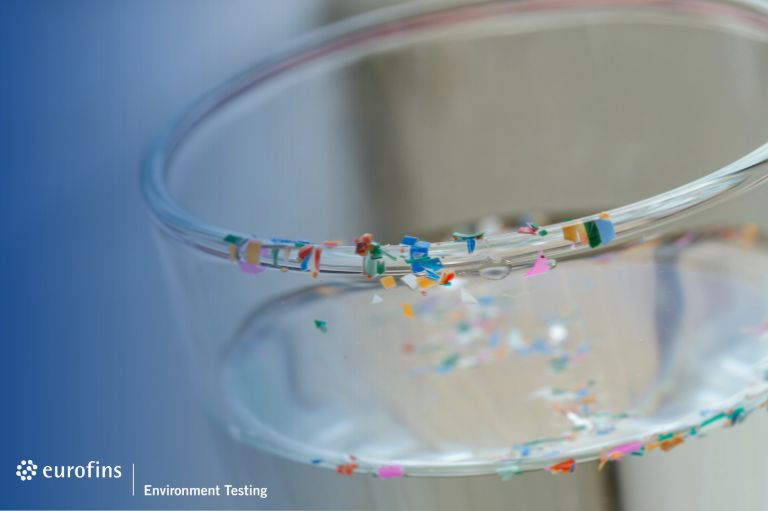Growing concern about microplastics has sparked renewed interest in understanding the environmental impact of these particles. Despite their small size, their presence in oceans, soils and, consequently, in the human body has necessitated in-depth research to understand their effects.
What are microplastics?
Microplastics, particles composed entirely or partially of synthetic polymers and smaller than 5 mm in size, have recently emerged as a silent threat to our environment.
In addition to microplastics, there are other size ranges of plastics that are represented by mega-, macro- and meso-plastics:
Microplastics are found in various forms in the environment such as fragments, microspheres (or microbeads), pellets, fibers, foam, and film. These tiny particles, which originate from the decomposition of larger plastic objects or are created directly in products such as microbeads, pose a significant risk to aquatic ecosystems and human health.
Types of microplastics according to their origin
Microplastics can be classified into two groups according to their origin: primary and secondary.
- Primary microplastics (mainly microbeads, pellets and microfibers): they are usually smaller than 5 mm and are manufactured for industrial purposes. Microbeads are generally used in cleaning products, cosmetics, exfoliants or toothpaste. Pellets are used for the creation of macroplastics, which are melted in molds to acquire the shape of the plastic object into which they will be transformed. Finally, microfibers come from fishing nets and synthetic fabrics, such as elastane (lycra) or polyester, which are very common in our clothing. The latter are the main primary microplastics found in the oceans.
- Secondary microplastics (mainly fragments, film and foam) result from the decomposition of larger plastic products. Fragments are the most common secondary microplastics, while film is plastic usually from plastic bags, paper film and packaging materials. Foam is any type of plastic with a foamy texture such as polystyrene, polyethylene or PVC expanding foams.
How are microplastics analyzed?
Their analysis is crucial to understand the magnitude of the problem and to design effective mitigation strategies. The steps in the analysis are as follows:
- Particle separation
- Sample preparation or clean-up
- Particle identification
- Particle quantification
- Analysis of the specific composition (polyethylene (PE), polystyrene (PS), polypropylene (PP), polyvinyl chloride (PVC), polyethylene terephthalate (PET), polycarbonate (PC), polymethylmethacrylate (PMMA) and polyamide (PA)).
- Delivery of report with type, number, size, morphology and color of particles.
Analysis techniques
There are currently no standardized methods for the characterization of microplastics, and different analytical techniques are being evaluated by both experts and regulatory agencies.
No single analytical technique is likely to provide a complete picture when approaching a microplastic contamination study, so both spectroscopic and chemical methods of analysis are often desirable.
The choice of microplastic analysis method depends on the purpose of the analysis and the material to be analyzed.
The analysis process involves specialized instrumental techniques, such as thermal desorption combined with gas chromatography and infrared spectroscopy. These methods, available at Eurofins Environment Testing Spain Laboratories, allow accurate characterization of microplastics, even at minute concentrations, and provide crucial data for informed decision making.
- Fourier Transform Infrared Spectroscopy with ATR accessory (ATR-FTIR): allows rapid identification of larger microplastic particles by comparing the spectrum obtained from the sample with libraries.
- Direct Thermal Desorption (TD) – Gas Chromatography (GC-MS): this technique allows us to separate and analyze the compounds coming from the thermal fragmentation of polymers present in the samples. It allows precise identification and quantification of very small quantities of microplastics in a variety of matrices.
Eurofins Environment Testing Spain’s Microplastics Analysis Service
At Eurofins Environment Testing Spain we understand the concern about this issue and we want to provide solutions. We have a network of laboratories specialized in this type of analysis. Our experience allows us to offer first class analytical solutions, supported by state-of-the-art technology and a highly trained team.
Discover our wide range of microplastic analysis services, designed to meet the needs of various sectors. From the food industry to environmental research, we provide tailored solutions to understand and address the presence of microplastics in any environment.
To gain a thorough understanding of the composition of microplastics and study their effects, trust Eurofins Environment Testing Spain. Together we can meet the challenge of microplastics and work towards a more sustainable future.

